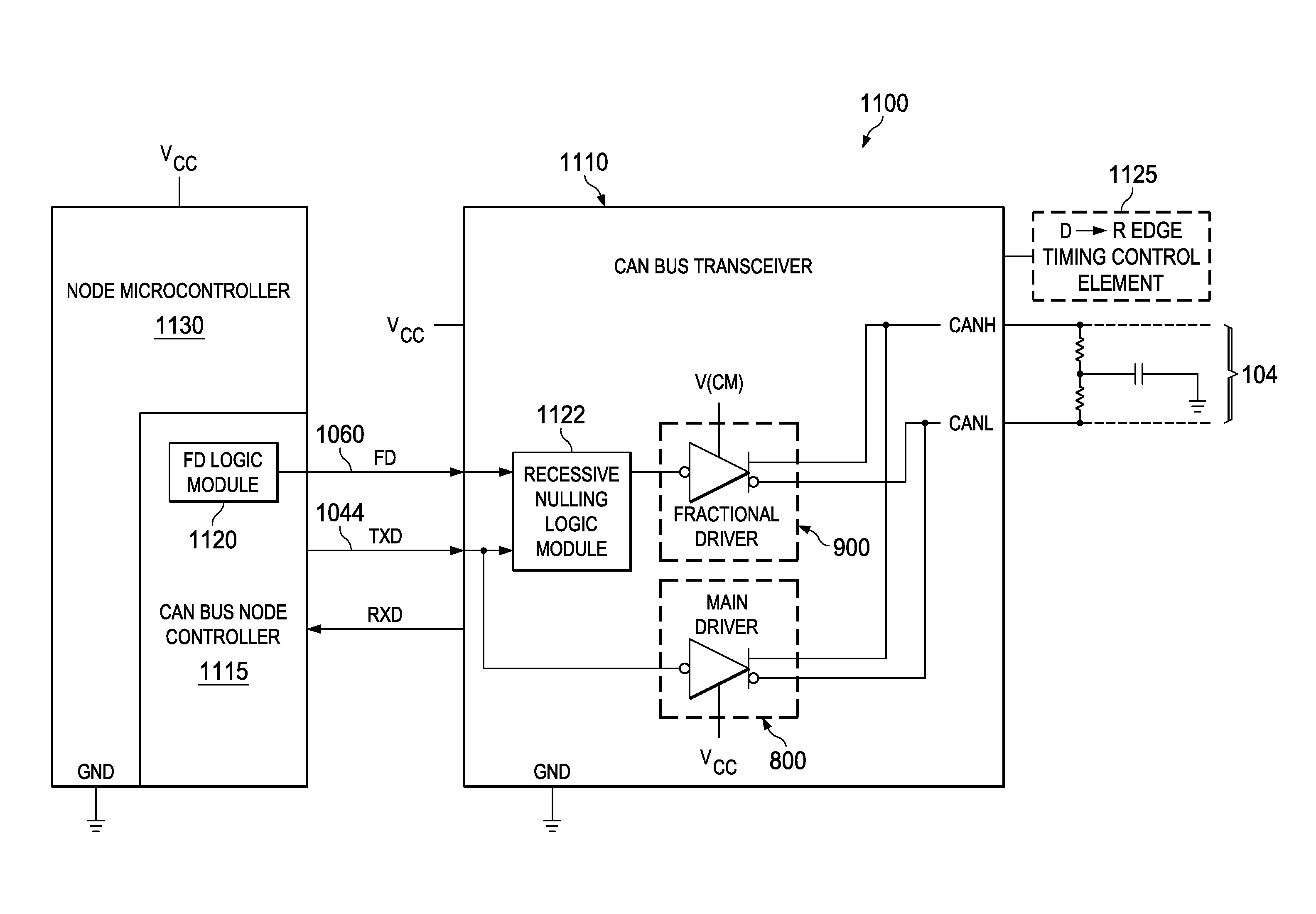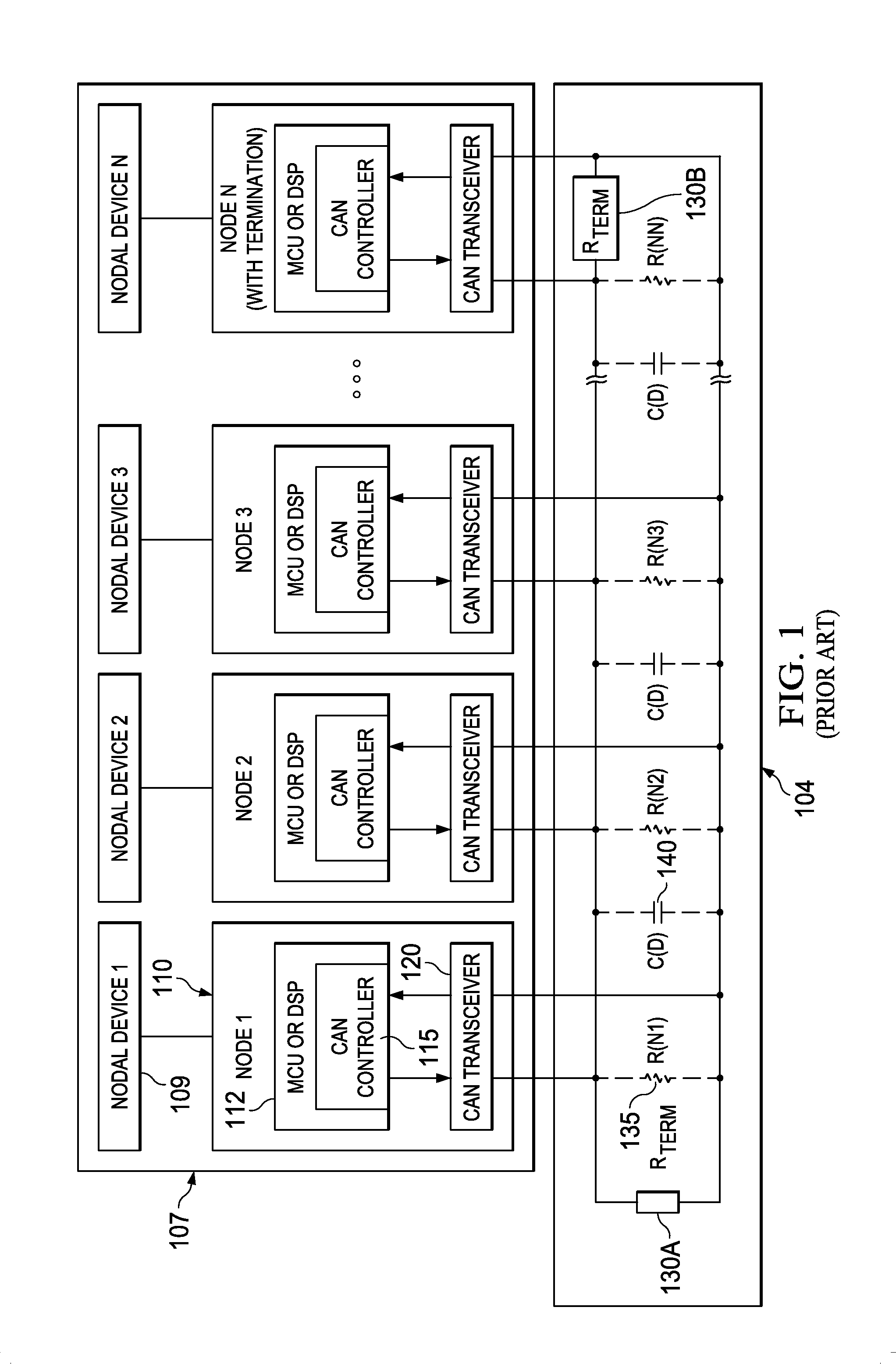Can bus edge timing control apparatus, systems and methods
a timing control and can bus technology, applied in the field of data networking, can solve the problems of limiting the can bus bandwidth, the maximum number of attached nodes, the length of the can bus, etc., and achieves the effects of reducing the overall parallel bus impedance, increasing the decay rate, and modestly increasing the data ra
- Summary
- Abstract
- Description
- Claims
- Application Information
AI Technical Summary
Benefits of technology
Problems solved by technology
Method used
Image
Examples
Embodiment Construction
[0030]FIGS. 7A and 7B are a flow diagram illustrating a method 700 of CAN bus dominant-to-recessive transmit data bit timing control according to various example sequences. The method 700 commences at block 705 with selecting LRN mode, HRN mode, or mixed-mode for transmission of a CAN data frame.
[0031]The method 700 continues at block 710 with selecting the recessive nulling time period associated with LRN mode operation as a function of an expected bus impedance during a recessive bus state. The expected bus impedance is a function of one or more CAN bus characteristics including bus length, bus distributed parasitic capacitance, and bus loading contributed by a CAN node physical layer (PHY) driver. The recessive nulling time period is selected to drive the CAN bus differential waveform toward a recessive state at a chosen rate. The method 700 also includes, for HRN mode and for HRN portions of mixed-mode operation, selecting the recessive nulling time period to include at least on...
PUM
 Login to View More
Login to View More Abstract
Description
Claims
Application Information
 Login to View More
Login to View More - R&D
- Intellectual Property
- Life Sciences
- Materials
- Tech Scout
- Unparalleled Data Quality
- Higher Quality Content
- 60% Fewer Hallucinations
Browse by: Latest US Patents, China's latest patents, Technical Efficacy Thesaurus, Application Domain, Technology Topic, Popular Technical Reports.
© 2025 PatSnap. All rights reserved.Legal|Privacy policy|Modern Slavery Act Transparency Statement|Sitemap|About US| Contact US: help@patsnap.com



